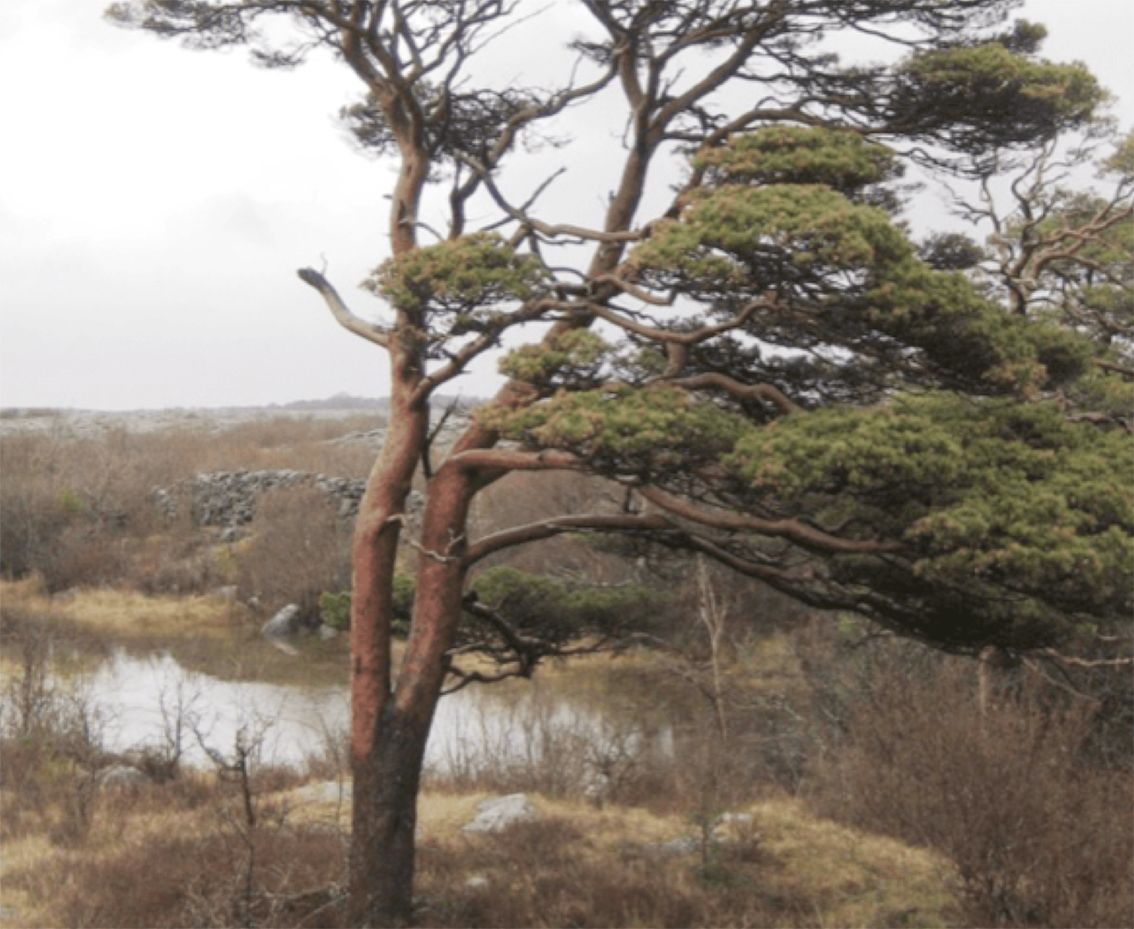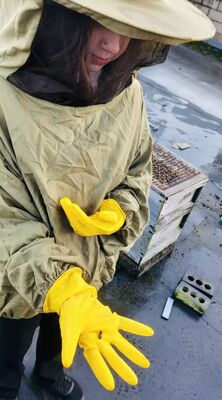THIS is the tree that has rewritten Irish natural history. The pine tree is growing at the side of a lake in the Burren in County Clare on Europe’s most western outpost.
And it was its remote position – on top of one of the Burren’s famous limestone slabs – that first piqued the interest of a couple of botanists. They had a theory, a wishful one, perhaps, that the native Irish Scots pine, which covered much of our land before going extinct around the year 1600, still survived somewhere in Ireland, perhaps on a lonely hilltop or a forgotten bog.
The tree pictured here is growing at a place called Rockforest, Coill Ó Flanchada. And it ticked every box for the botanists who were hoping against hope. First of all in the annals, there was no record of trees ever being planted here, although many had been planted in an estate nearby in the 1800s. Also, the limestone slabs underneath the pine tree meant that the ground was useless for farming, so there was little point in ever cutting it or its ancestors down. Maybe, just maybe, it survived when every other Irish pine got the chop.
The problem with pines is that they can’t be coppiced. Once they are cut in any major way, their roots die, and so over those two terrible centuries in Ireland, every single one was killed.
But the botanists from Trinity College Dublin held on to hope. They took pollen samples from the lake which could be accurately traced back through the centuries. They hoped the pollen would be present unbroken in time right up until the present day, including those two vital centuries between 1550 when Irish pine vanished, and 1750 when Scots pine was introduced in plantations.
Dúlra can’t begin to imagine the scientists’ delight when they studied the findings. There was no break in the pollen – this tree, and a few others around, had been here, continuously with no break, for more than a thousand years.
This was the holy grail: a plant believed to be extinct returning from the dead.
With so much of Ireland’s wildlife facing oblivion or already having vanished, it was a rare turning of the tide, a glimmer of hope to light up the darkness.
The Irish tree rule book would have to be torn up. Everyone had believed that every pine tree we had were non-native imports, including the famous giants that still line parts of the Glen Road at Coolnasilla. As such, they were second class; for example, the Irish Peatland Conservation Councils considered Scots pine an invasive species that shouldn't be planted and indeed should be removed where possible.
The Irish Scots pine isn’t a separate species – to all intents and purposes it’s identical to its Scottish cousin. But now we know this species is truly native, it will be given a new lease of life. It’s been given an Irish passport, and we all know how valuable that is.
For starters, thousands of seeds have been collected from the Burren pines since that discovery a few years ago. The oldest one you can buy is just three years old and it costs €18 from a garden centre in Clare which ships them nationwide.
Already countless thousands have been planted, especially in the Burren.
Dúlra’s ordered one, but he’s not sure where he should plant it. Pines are lovely, graceful trees, but by God they’re big. Plant it in your garden, and in a few decades it’ll be towering over your house, casting a shadow over the street. Maybe Dúlra could donate it to Belfast City Council and they could plant it on the Glen Road to give long-overdue company to the handful of lonely survivors there, mainly outside All Saints College. Those trees are easily over 100 years old, but it seems that every decade another one disappears.
Wouldn’t it be great to have one of West Belfast’s finest thoroughfares lined with majestic pine trees once more? It would be a living tribute to the native Irish tree that, for centuries, we thought we'd lost for ever.
• If you’ve seen or photographed anything interesting, or have any nature questions, you can text Dúlra on 07801 414804.







